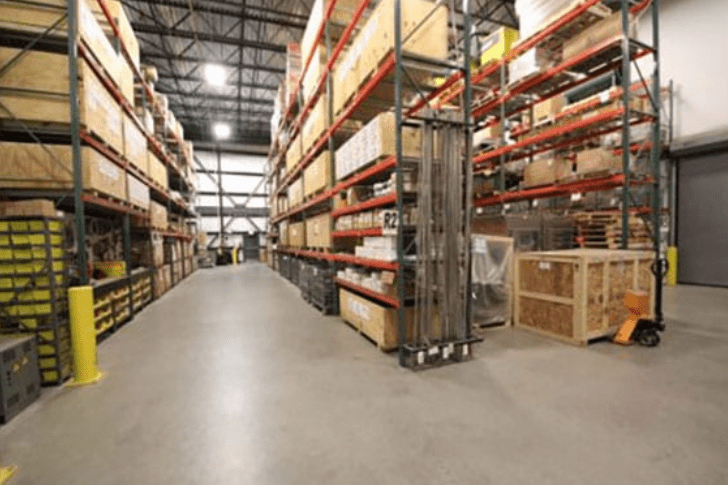Comparative Analysis: Choosing the Right Warehouse Management System for Your Business
In today’s market, an efficient warehouse management system (WMS) is essential, especially in Australia. This article offers a comparative analysis of WMS options, focusing on key features, costs, and local considerations.

Understanding Warehouse Management Systems
A Warehouse Management System is a software solution designed to optimize warehouse operations by managing inventory, fulfilling orders, and tracking stock levels in real-time. Effective WMS solutions enhance productivity, reduce costs, and improve customer satisfaction by automating manual processes and providing insights into the supply chain.
Factors to Consider
When choosing a WMS for your business, consider the following key factors:
- Scalability: The system should grow with your business, accommodating increased volume without sacrificing performance.
- Integration: It should integrate seamlessly with your existing systems such as ERP, CRM, and accounting software.
- Customization: The ability to customize workflows and user interfaces to match your specific operational needs.
- Support and Training: Adequate support and training are essential for smooth implementation and ongoing operation.
- Cost: Costs can vary significantly based on features, scalability, and vendor. In Australia, prices can range from $10,000 for basic systems to over $100,000 for comprehensive, customized solutions.
Comparing Popular WMS Options in Australia
1. NetSuite Oracle WMS
- Price Range: Starting around $20,000 annually.
- Key Features: Robust inventory management, RF device compatibility, and real-time analytics dashboard.
- Best for: Businesses looking for an all-in-one cloud solution with strong financial and CRM capabilities.
2. HighJump
- Price Range: Typically from $15,000 to $75,000.
- Key Features: Offers extensive customization options, advanced reporting tools, and direct store delivery functionality.
- Best for: Larger enterprises needing a highly customizable system.
3. Fishbowl Inventory
- Price Range: From $4,395 for a one-time software license.
- Key Features: Integration with QuickBooks, part tracking, and service management.
- Best for: Small to medium-sized enterprises (SMEs) needing an affordable, effective solution.
4. Manhattan Associates
- Price Range: Initial costs can exceed $50,000.
- Key Features: Advanced optimization algorithms, labor management, and multi-channel fulfillment.
- Best for: Large companies requiring a powerful system to manage complex logistics operations.
Evaluating the Return on Investment
Investing in a WMS should ultimately lead to cost savings and increased efficiency. Australian businesses should consider:
- Reduction in labor costs: Automation reduces the need for manual tasks.
- Improved inventory accuracy: Minimizes losses and write-offs.
- Enhanced customer satisfaction: Faster and more accurate order processing improves customer service.
Industry-Specific Needs
Different industries have unique needs that may influence the choice of a WMS. For instance, a pharmaceutical company will require strict compliance with health regulations, whereas a retail business might prioritize fast, efficient order processing for e-commerce.
Case Study: Retail Industry A leading Australian retailer implemented a new WMS and saw a 25% improvement in order fulfillment speed and a 30% reduction in inventory discrepancies, which significantly boosted their customer satisfaction ratings.
Case Study: Manufacturing Sector A manufacturing firm in Australia adopted an advanced WMS that integrated seamlessly with their existing manufacturing systems, leading to a 20% decrease in operational costs and improved production scheduling.
Global Trends and Innovations
The global shift towards automation and smart technologies is shaping the development of WMS. Innovations such as artificial intelligence, machine learning, and Internet of Things (IoT) integration are becoming standard features in advanced systems.
AI and Machine Learning These technologies enable predictive analytics for inventory management, optimizing stock levels and reducing waste. In Australia, companies are increasingly adopting these advanced technologies to stay competitive.
IoT Integration IoT devices track and monitor inventory movements in real-time, improving accuracy and providing valuable data that can be used to enhance operational efficiency.
Local Considerations
Operating in Australia presents unique challenges such as vast distances between major cities and the need for robust systems that can handle these logistical complexities. Additionally, the Australian market has specific regulatory requirements that must be considered when implementing a WMS.
Conclusion
Choosing the right warehouse management system is crucial for optimizing logistics operations in Australia. Businesses must carefully assess their needs, consider local and industry-specific requirements, and stay informed about the latest technological advancements to make an informed decision.







Recent Comments